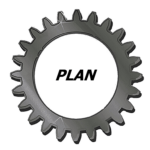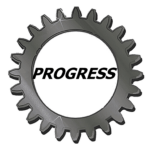Continuity Plan
In an unpredictable world, businesses must be prepared for any eventuality. Essential continuity plans serve as the unbreakable backbone that ensures the smooth functioning of organizations during times of crisis.

Chapter 1: What is it?

Continuity plans serve as strategic frameworks that enable organizations to anticipate and respond to potential disruptions. They outline a set of predetermined actions that need to be taken during emergencies or crises, ensuring that critical business functions can continue without interruption. The primary purpose of continuity plans is to safeguard an organization’s ability to serve its customers, protect its workforce, and maintain a competitive edge. These plans help businesses identify vulnerabilities, mitigate risks, and establish procedures to effectively respond to and recover from disruptive events. By clearly defining roles, responsibilities, and communication channels, continuity plans ensure that everyone in the organization knows what to do during a crisis, minimizing confusion and enabling a swift and coordinated response.
Chapter 2 : When do I use it?

Organizations must be prepared to face unforeseen disruptions and ensure seamless operations. One critical tool that can unlock the power of preparedness is a continuity plan. Continuity plans are comprehensive strategies that outline how businesses can navigate through crises, maintain essential functions, and minimize the impact of disruptions. By implementing and harnessing the potential of continuity plans, organizations can confidently navigate through uncertainties and emerge stronger than ever.
Chapter 3: How do I use it?

A continuity plan acts as a safety net for your business, allowing you to weather any storm and bounce back quickly. It not only helps you maintain operational stability during disruptive events but also minimizes financial losses and protects your reputation. Without a proper plan in place, your business may struggle to recover from unforeseen events, leading to potential closures or bankruptcy. By investing time and resources into creating a foolproof continuity plan, you are safeguarding your organization’s future.
Step 1: Identifying Potential Risks and Disruptions
The first step in creating a foolproof continuity plan is to identify potential risks and disruptions that could impact your business. This involves conducting a comprehensive risk assessment to identify both internal and external threats. Internal risks could include system failures, data breaches, or employee errors, while external risks may range from natural disasters to supply chain disruptions. By understanding these risks, you can prioritize and allocate resources effectively to mitigate their impact.
Step 2: Building a Resilient Framework
Once you have identified the risks, the next step is to build a resilient framework. This involves creating response strategies and developing contingency plans for each identified risk. Your framework should outline clear roles and responsibilities, establish communication channels, and provide guidelines for decision-making during disruptions. Additionally, it is crucial to ensure that you have backups for critical systems and data, implement security measures, and establish alternate suppliers or service providers to minimize the impact on your operations.
Step 3: Testing and Fine-Tuning Your Plan
Testing and fine-tuning your continuity plan is vital to ensure its effectiveness. Conducting regular drills and simulations will help you identify any gaps or weaknesses in your plan and allow you to make necessary improvements. It is essential to involve all relevant stakeholders in these exercises, including employees, suppliers, and key partners. By testing your plan in realistic scenarios, you can gain valuable insights and ensure that everyone understands their roles and responsibilities during disruptions, making the execution of the plan seamless and efficient.
In today’s unpredictable business environment, a foolproof continuity plan is no longer a luxury but a necessity. By following these three critical steps – identifying risks, building a resilient framework, and testing your plan – you can ensure that your organization can navigate through disruptions smoothly. Remember, a well-prepared business is a resilient business. So, invest the time and resources into creating a continuity plan, and you can sail through any storm with confidence.
Chapter 4 :Why should I use it?

In an unpredictable world, businesses must be prepared for any eventuality. Essential continuity plans serve as the unbreakable backbone that ensures the smooth functioning of organizations during times of crisis. These plans provide the necessary framework and strategies to mitigate risks, maintain operations, and safeguard valuable assets. By uncovering their indispensable power, businesses can confidently navigate through turbulent times and emerge stronger than ever.
Chapter 5 : Coaching Benefits
![]()
I need help…
Not all help costs money. Requests for additional information and potential application for your industry, helps us to improve the training experience, at no charge to you.
When do I need coaching services?
Coaching has proven time and time again to be a powerful tool in optimizing performance and driving efficiency in various aspects of life. Whether it is in the workplace, educational settings, or even within personal relationships, coaching has the ability to unlock untapped potential and enhance productivity. By leveraging the collective intelligence and diverse skills of a group, individuals can capitalize on their strengths, overcome challenges, and achieve remarkable results.
What do I get with coaching services?
Our Role – Quality coordinating – Work to understand your system, review your needs, and suggest process improvements.
We help you use a chosen template and apply it to your business model, with or without action plans.
Coaching includes personalized shareable document for use or for future coaching.
1 hour online coaching (one on one coaching) no minimum participates

Download a Continuity Plan
Templates are like a secret weapon in the arsenal of content creators. They provide a foundation, a starting point that saves us time and energy.
Mobile Format
By using Google Docs we offer an extensive selection of free templates, covering various categories with no special apps to download making them truly mobile. These templates are also available in Microsoft Word format. These templates are designed by professionals, ensuring a polished and visually appealing outcome. With a few clicks, we can have a well-structured document, complete with headings, subheadings, and placeholders for our content. These templates act as a guiding hand, making it easier for us to organize our thoughts and ideas effectively. They eliminate the need to spend hours formatting and styling our documents, enabling us to focus on the content creation itself.
Simplify Creation Content
The true power of templates lies in their ability to simplify and streamline the content creation process. By using pre-designed layouts and formats, we can save valuable time and effort. Rather than starting from a blank canvas and grappling with design decisions, we can simply choose a template that aligns with our desired style and purpose. This not only speeds up the creation process but also ensures a consistent and professional look for our content.
Templates also allow for customization, enabling us to personalize the document according to our needs.This level of flexibility empowers us to create visually stunning content without the need for advanced design skills. Templates break down the barriers between creativity and execution, making content creation accessible to all.
Unleash Your Creativity
Effortless content creation is within our reach, thanks to the power of free templates in Google Docs and Microsoft Word. By utilizing these templates, we can simplify our workflows, save time, and produce high-quality content without the need for extensive design knowledge. Unlocking the potential of templates allows us to focus on what truly matters – our ideas, thoughts, and messages. So why start from scratch when we have a vast library of templates waiting to be explored? Embrace the convenience and unleash your creativity by utilizing the power of free templates in your next content creation endeavor.
What is a Continuity Plan?
Watch this Video.
Business continuity planning is essential for maintaining the resilience and sustainability of any organization. By developing a comprehensive business continuity plan, businesses can anticipate potential disruptions and put measures in place to mitigate their impact. This proactive approach helps reduce downtime and ensures that critical business functions can continue operating, even in the face of unexpected events.
As You Watch This Video
As you watch this video to understand the available template;
1. Risk categories are the threats and risks facing your company.
2. Assess the personnel and assets in order to protect them and their function in the event of a disaster.
3. Mitigations are the actions performed to eliminate , lessen or accept the impacts in the event that the catastrophe strikes.
4. Contingencies are the thorough updated plans in anticipation of the worst.
5. 40% lack a plan and 2/5ths do not reopen after disasters. A mean time to recovery are the times to notify the public, times the reaction plans will be in place and occur and finally the times that the corrections will be in place and full recovery will take place.
6. Insurance companies are requiring these plans as a due diligence plan before underwriting policies can occur.
7. Having a plan is a start. The company should train employees and test these plans on a regular basis so that continuity of the organization can take place.
Still need to visualize, understand the design of the Contingency Plan and how the method is tested, see the following case studies.

Case Study 1 - Led to Manage LLC
Our view of this process
How we used this form.
1. We started with the assessment of the natural disasters that could happen. Fortunately for the Grand Valley, flooding is the greatest threat that could occur.
t2. Next we looked at the major disruptions in utilities and communications. Since we are not reliant on building or structure that was not a major factor. The computers and network were considered. As for the personal, illness, pandemic impacts and death were considered also.
3. Next we rated each factor with a simple system, where 1 – little impact, incident and obscurity, 2- they are manageable and 3 – not manageable or high obscurity. Multiply all numbers and rated the highest to lowest risk.
4. We discussed the highest risk values to the Lowest. Discussing how long it would take to notice the risk, what reactions we should have and what corrections should take place in order to get ack to normal business.
Lessons Learned
In the development of our continuity plan, it helped us to identify:
1. Which processes could be mobile and which need a locale in order to happen. This helped to determine and prioritize resources needed to accomplish this mobile status.
2. Some items seemed severe but were easier to overcome an bring the organization back to operational. Some rated less severe but had a greater impact than rated because they required a distress plan where the board of directors would have to meet to make continuance plans for the organization
3. It was also interesting when the time of each action was summed and we had to reassess actions to get the total to a days time period, where solution, repair, replacement or notifying the public of loss or the shutting down of operations with accounts transferred to alternate providers.